I must say this caught my attention...
Add 1 1/4 Inches to your Calves with Explosive Training
How to gain up to 1 ¼ inches in calf size in two months
by Charles Poliquin http://www.charlespoliquin.com/
Using the training methods of elite athletes is one way to develop muscles in specific areas. Want great quads? Try speed skating. A thick neck? Train like a wrestler. Wide shoulders? Take up gymnastics. But what do you do if you want great calves? Sprinting and the jumping events in track are obviously out, as these athletes are seldom known for their calves - quads and hamstrings, sure, but big calves do not seem to be an automatic result of success in track and field. But there's a problem with such logic.
To excel in sprinting and jumping, at least at the elite level, genetics play a large role. Those who excel in the sprinting and jumping events in track usually have what is known as "high calves," which means they have superior leverages as a result of a relatively long Achilles tendon and a short calf muscle. In contrast, a sprinter or jumper with relatively "long calves" will have much more impressive muscle development but will be at a definite disadvantage.
The late Arthur Jones in his book Nautilus Bulletin #2 told the story of a visit he had by a former Mr. America with impressive calf development. This bodybuilder had a twin brother who did not train, but Jones saw both of them and observed that the brother actually had better calf development than the bodybuilder. In effect, Jones said that all the training this bodybuilder had done may have had little influence on his calf development and might have even reduced the size of his calves! There's more.
When Jones mentioned this observation in an article he wrote for Iron Man magazine, the bodybuilder wanted the editor to censor Jones' comments about his calves. Jones said that the bodybuilder had entered into an agreement with an exercise equipment manufacturer who wanted to imply that his impressive calf development was attributable to this machine.
I share this story to show that it's not so much the training methods of sprinters and jumpers that are responsible for poor calf development as it is genetics. In fact, the training methods used by sprinters and jumpers, especially the methods that fall under the category of plyometrics, probably significantly improved their calf development - it's simply not as noticeable because of their lower-leg anatomy. In this article I'd like to explore one of these training methods, a type of jump squat, as I've found it can be quite effective in breaking through calf training barriers.
Leaping Past Barriers with Jump Squats
Jump squats, performed in the way I am about to describe, will create appreciable soreness in your calves when you first perform them. The soreness will decrease with training, but the gains in calf development will continue.
At the beginning of each of these workouts, to avoid injury you need to warm up your calves by performing progressively heavier sets of standing calf raises. Make certain you do a full range of motion on every rep, but don't go to failure - this is just a warm-up.
Begin the workout by loading a barbell that represents 25 percent of your bodyweight and placing it across the top of your traps (as an alternate overload implement, you can use a sandbag with handles). You want to avoid performing jump squats with dumbbells, as upon landing the dumbbells will place undue stress on the soft tissue and joint structures of the shoulder girdle.
Begin by jumping up and down for five sets of 12 reps, resting two minutes between sets. Make sure that the duration of ground contact is kept to a minimum. You are striving to achieve maximal height with each jump while keeping the involvement of the knee extensors to a minimum. In other words, you want your feet to touch the floor for the briefest amount of time. The hypertrophy and strength gains in your calves will be coming from the fast eccentric loading caused by the landings. Jump squats performed with too much weight do not create sufficient acceleration and do increase the ground contact time. Air time is more important than load.
Use the same load on the barbell for six workouts - DO NOT increase the weight at all for the duration of the cycle. Concentrate on accelerating the barbell and being consistent with each landing. Often times, in athletes with structural balance issues or those plagued with coordination problems, the landing patterns are inconsistent from one rep to another. For example, someone whose knees buckled in for both the pre-loading and the landing of jump squats either is definitely not ready for jump squats or is using too much weight to maintain proper jumping mechanics.
After completing six workouts in this manner, perform another six workouts but with the following changes: Jump for six reps with a barbell weighing 30 percent of bodyweight, then put the barbell on the floor and immediately perform another six reps with just your bodyweight. Do five of these drop sets, resting three minutes between sets.
Again, the major problem I've seen with jump squats is using weights that far exceed an individual's stretch-shortening-cycle capabilities. In contrast, I've heard that the late super heavyweight weightlifter Serge Reding could jump 16 inches off the ground using a 286-pound barbell; but you have to consider that this was a man who according to witnesses could squat 880 pounds for five reps (without any supportive gear) and snatch 400 pounds -at a height of 5 feet 8 and with 20-inch calves and 31-inch thighs!
On paper this may not seem like much of a workout, especially compared to many calf training programs, but the rewards will be appreciable. Using such an approach, I've seen gains of 1.25 inches in calf circumference in eight weeks. Poor genetics or not, that's the type of progress that is worth trying if you are serious about adding muscle mass to your lower legs.
Add 1 1/4 Inches to your Calves with Explosive Training
How to gain up to 1 ¼ inches in calf size in two months
by Charles Poliquin http://www.charlespoliquin.com/
Using the training methods of elite athletes is one way to develop muscles in specific areas. Want great quads? Try speed skating. A thick neck? Train like a wrestler. Wide shoulders? Take up gymnastics. But what do you do if you want great calves? Sprinting and the jumping events in track are obviously out, as these athletes are seldom known for their calves - quads and hamstrings, sure, but big calves do not seem to be an automatic result of success in track and field. But there's a problem with such logic.
To excel in sprinting and jumping, at least at the elite level, genetics play a large role. Those who excel in the sprinting and jumping events in track usually have what is known as "high calves," which means they have superior leverages as a result of a relatively long Achilles tendon and a short calf muscle. In contrast, a sprinter or jumper with relatively "long calves" will have much more impressive muscle development but will be at a definite disadvantage.
The late Arthur Jones in his book Nautilus Bulletin #2 told the story of a visit he had by a former Mr. America with impressive calf development. This bodybuilder had a twin brother who did not train, but Jones saw both of them and observed that the brother actually had better calf development than the bodybuilder. In effect, Jones said that all the training this bodybuilder had done may have had little influence on his calf development and might have even reduced the size of his calves! There's more.
When Jones mentioned this observation in an article he wrote for Iron Man magazine, the bodybuilder wanted the editor to censor Jones' comments about his calves. Jones said that the bodybuilder had entered into an agreement with an exercise equipment manufacturer who wanted to imply that his impressive calf development was attributable to this machine.
I share this story to show that it's not so much the training methods of sprinters and jumpers that are responsible for poor calf development as it is genetics. In fact, the training methods used by sprinters and jumpers, especially the methods that fall under the category of plyometrics, probably significantly improved their calf development - it's simply not as noticeable because of their lower-leg anatomy. In this article I'd like to explore one of these training methods, a type of jump squat, as I've found it can be quite effective in breaking through calf training barriers.
Leaping Past Barriers with Jump Squats
Jump squats, performed in the way I am about to describe, will create appreciable soreness in your calves when you first perform them. The soreness will decrease with training, but the gains in calf development will continue.
At the beginning of each of these workouts, to avoid injury you need to warm up your calves by performing progressively heavier sets of standing calf raises. Make certain you do a full range of motion on every rep, but don't go to failure - this is just a warm-up.
Begin the workout by loading a barbell that represents 25 percent of your bodyweight and placing it across the top of your traps (as an alternate overload implement, you can use a sandbag with handles). You want to avoid performing jump squats with dumbbells, as upon landing the dumbbells will place undue stress on the soft tissue and joint structures of the shoulder girdle.
Begin by jumping up and down for five sets of 12 reps, resting two minutes between sets. Make sure that the duration of ground contact is kept to a minimum. You are striving to achieve maximal height with each jump while keeping the involvement of the knee extensors to a minimum. In other words, you want your feet to touch the floor for the briefest amount of time. The hypertrophy and strength gains in your calves will be coming from the fast eccentric loading caused by the landings. Jump squats performed with too much weight do not create sufficient acceleration and do increase the ground contact time. Air time is more important than load.
Use the same load on the barbell for six workouts - DO NOT increase the weight at all for the duration of the cycle. Concentrate on accelerating the barbell and being consistent with each landing. Often times, in athletes with structural balance issues or those plagued with coordination problems, the landing patterns are inconsistent from one rep to another. For example, someone whose knees buckled in for both the pre-loading and the landing of jump squats either is definitely not ready for jump squats or is using too much weight to maintain proper jumping mechanics.
After completing six workouts in this manner, perform another six workouts but with the following changes: Jump for six reps with a barbell weighing 30 percent of bodyweight, then put the barbell on the floor and immediately perform another six reps with just your bodyweight. Do five of these drop sets, resting three minutes between sets.
Again, the major problem I've seen with jump squats is using weights that far exceed an individual's stretch-shortening-cycle capabilities. In contrast, I've heard that the late super heavyweight weightlifter Serge Reding could jump 16 inches off the ground using a 286-pound barbell; but you have to consider that this was a man who according to witnesses could squat 880 pounds for five reps (without any supportive gear) and snatch 400 pounds -at a height of 5 feet 8 and with 20-inch calves and 31-inch thighs!
On paper this may not seem like much of a workout, especially compared to many calf training programs, but the rewards will be appreciable. Using such an approach, I've seen gains of 1.25 inches in calf circumference in eight weeks. Poor genetics or not, that's the type of progress that is worth trying if you are serious about adding muscle mass to your lower legs.


 Please Scroll Down to See Forums Below
Please Scroll Down to See Forums Below 










